Expert tips for capturing dynamic sports photographs.
Whether it’s the thrill of a game-winning goal, the grace of a gymnast in flight, or the determination on an athlete’s face, sports photography requires great precision and timing. Veteran photographer and Zenfolio Ambassador Jeff Cable not only has a reputation for being a sports photographer but is also deemed a master at freezing the excitement, emotion, and drama of the games. With an exceptional portfolio spanning major sporting events, including the Olympics, Cable has not only witnessed sports history but has also played a crucial role in preserving those moments for posterity. His extensive expertise comes from a combination of photography skills and a deep understanding of technology.
In this article, Jeff Cable draws on his wealth of experience and in-depth knowledge to share with you his expert tips and techniques tailored to help you elevate your photography game. Whether you’re a seasoned sports photographer or are just starting out, Cable’s advice can help you capture the dynamic and inspirational moments across sports genres and events and bring you to the next level of success.
14-day free trial. No credit card required.
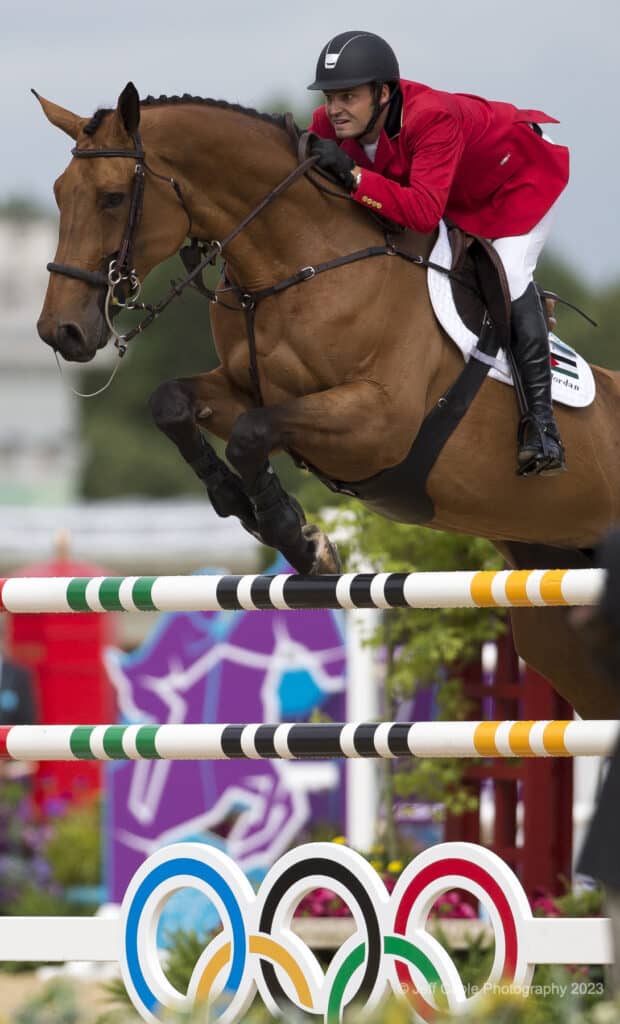
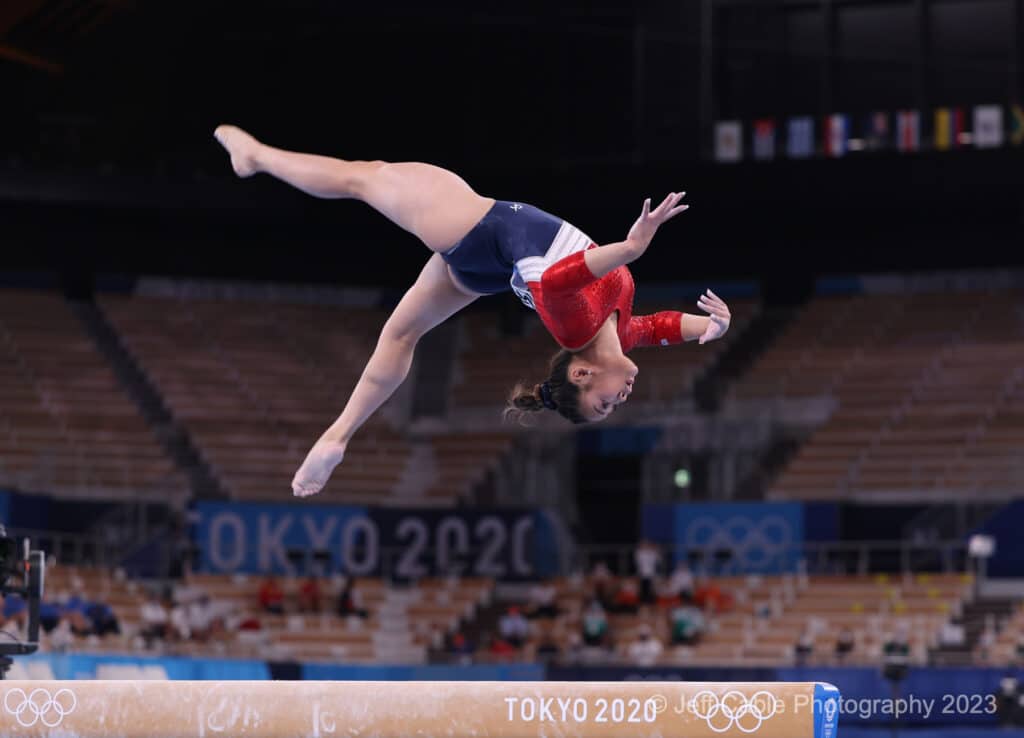
Mastering action photography.
The dynamic energy, fleeting moments, and intense emotions of fast-paced sports offer a great canvas for visual storytelling. In this section, Jeff Cable provides insight into mastering action photography, where the goal is to freeze that split-second, heart-pounding moment in time. His techniques and strategies can empower you to capture the most electrifying moments in any sport.
- Choose the right shutter speed: A fast shutter speed (around 1/1500 sec) will freeze the action, and a slow shutter speed (maybe 1/4o sec) combined with motion panning can result in an image with a sharp subject that conveys motion.
- Use Double Back-button focus: I use one button for face and eye detection and a second button on the back of the camera for single point servo focus.
- Use burst mode: I will shoot anywhere from 5 frames a second to 20 frames per second to capture that one image at the peak of action.
- Know the sport: As simple as it sounds, this is one of the most important tips. The more you know and understand about the sport you are photographing, the more you can anticipate what will happen at any time.
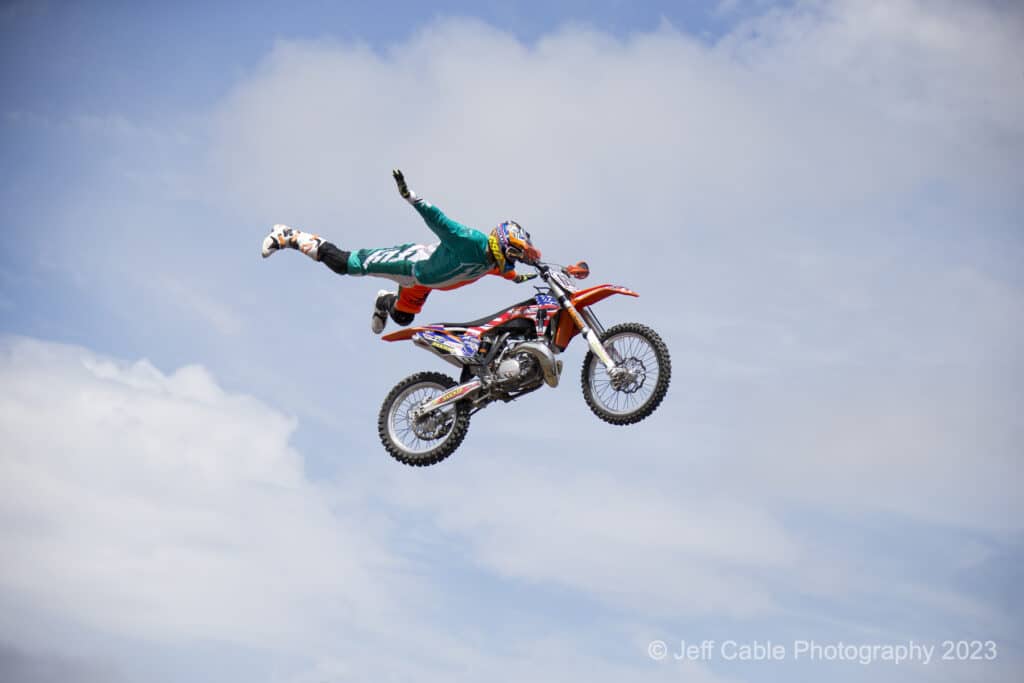
Composition and framing techniques.
Composition and framing allow you to capture images that not only showcase the action but also the emotions and energy that are the essence of the sport. With his wealth of experience, Jeff Cable shares insider knowledge and trade secrets about the intricate realm of composition and framing techniques, where every detail matters. These expert tips will teach you how to transform each image into a visual masterpiece that tells a story of triumph and intensity.
- Foregrounds and Backgrounds: Be hyper aware of your environment. I always look for a background which will enhance my photo, not have distractions when choosing my shooting positions.
- Find the right place: Position yourself where you think you will get the most forward-facing shots.
- Capture the action and the reaction: When starting out, many people get so caught up in the action that they forget to photograph the reactions of the athletes. Practice looking for and capturing reactions; they can take an image from good to amazing.
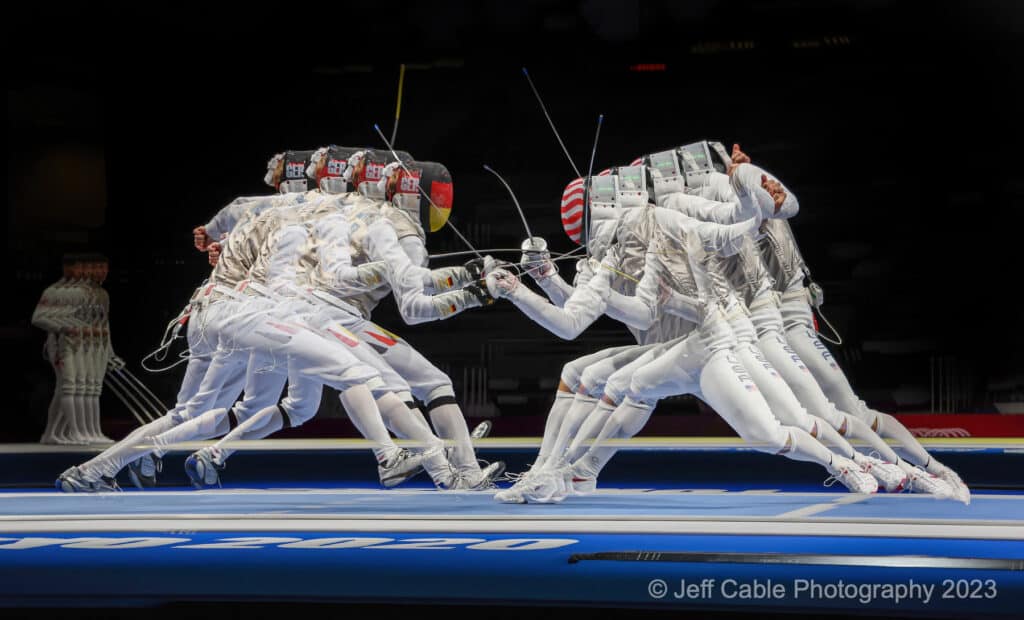
Maximizing lighting in sports photography.
The play of light and shadow can turn a mundane shot into a breathtaking masterpiece, adding depth, drama, and emotion to every frame. In this section, we delve into the art of maximizing lighting in sports photography, guided by the seasoned expertise of Jeff Cable, a luminary in the field. Drawing from his extensive experience, Cable shares invaluable insights that elevate the impact of your images, dictating drama, intensity, and mood within each frame.
- Find the best light: I usually photograph my subjects with the light in their faces, but sometimes will shoot from the opposite side for backlit photos. Experiment to add variety to your images; Both are interesting.
- Metering: I usually photograph in evaluative metering mode, but sometimes if you have dark subjects against a bright background (or vice versa), spot metering can be a better choice.
- Backgrounds: I prefer to photograph athletes with an interesting background, provided there are not any elements that will overwhelm or distract from the main subject. It might be a large crowd of spectators, or a colorful banner. My personal preference is a darker background so that it does not compete with my main subject.
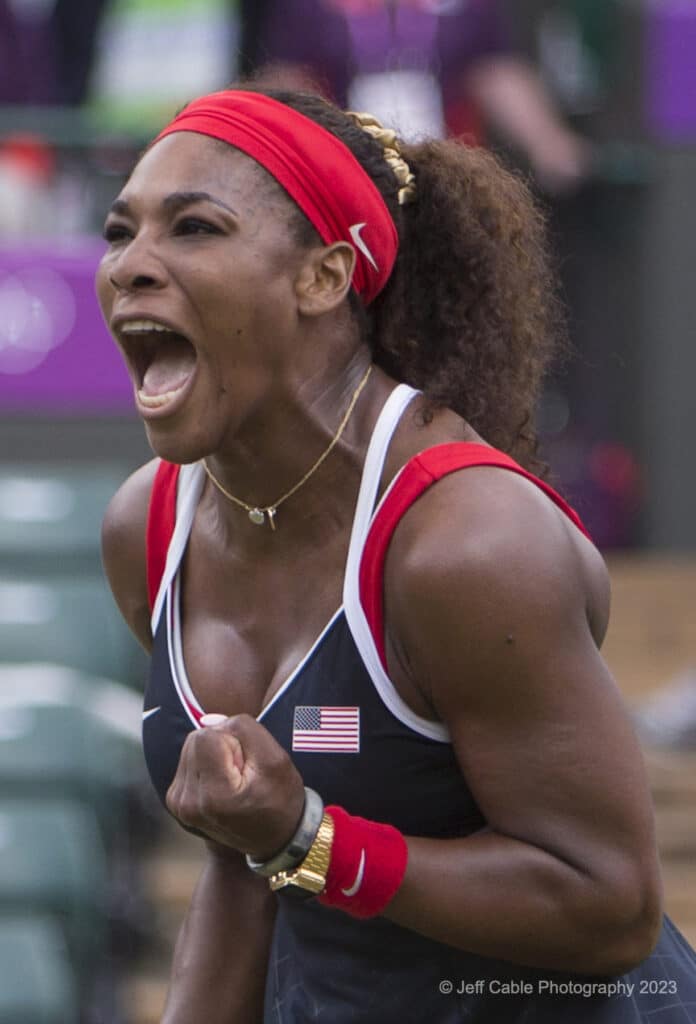
Emphasizing athlete expressions and emotions.
The fleeting moments of raw expressions and emotions etched across the faces of athletes and spectators hold the power to transform your image into a narrative of human endeavors and triumph. Cable offers us his secrets to immortalizing these intense and authentic moments in sports photography. He provides expert tips for capturing moments of intensity, determination, and celebration.
- Get familiar with the sport: Again, being knowledgeable about the sport you are photographing will allow you to anticipate what will happen at any time. This translates into being more prepared to capture emotional reactions during key moments.
- Know the athletes: When I photograph for an Olympic team, I study each athlete ahead of time, reviewing images and watching video footage, to know who celebrates big and who does not.
- Focus on the eyes, but include more: A great reaction is awesome to photograph, but many times it is more than the face. It may be a fist pump, a big kick, or another body motion.
- Don’t forget the spectators: Athletes may give you great facial expressions and reactions, but so will the spectators. Find some expressive people in the crowd, and photograph them, too. This can also apply to coaches and family members of the athletes.
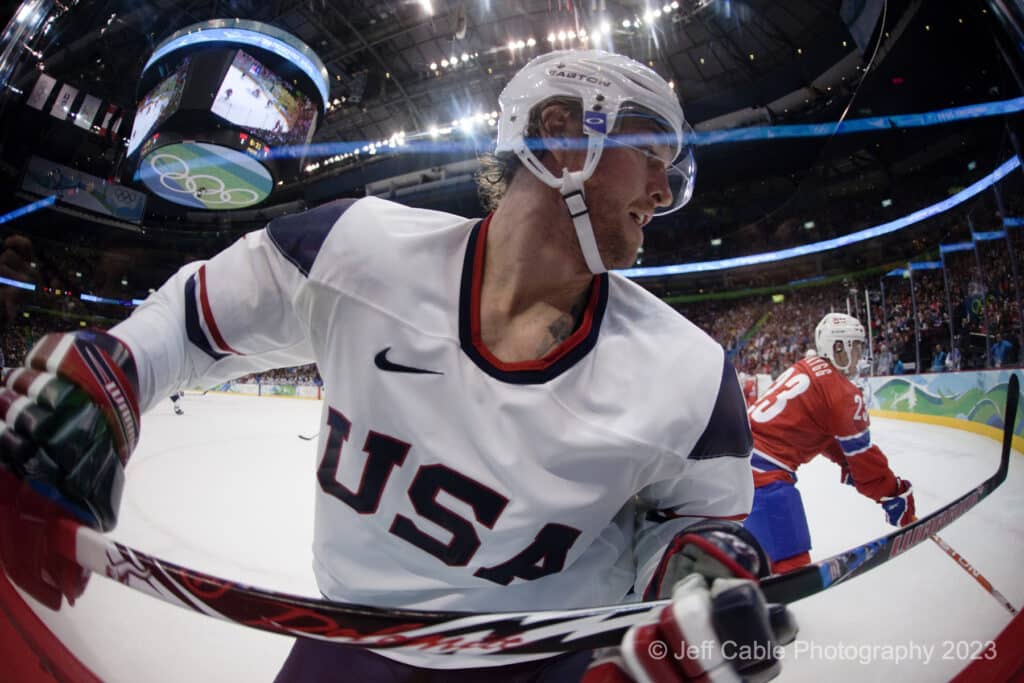
Utilizing unique angles and perspectives.
Unique angles and perspectives are the secret ingredients that transform a static image into a dynamic image, full of life, drama, and energy. With his wealth of experience, Cable reveals how these unconventional viewpoints not only capture the essence of a sporting moment but also amplify the visual impact of each image. The tips below share how he finds the extraordinary within the ordinary, resulting in sports images that shine with unparalleled depth and power.
- Photo positions: Once you have captured a lot of images from one location (maybe from the deck of the pool), try going to a different position (maybe up high) to get a different perspective.
- Depth of field: I usually shoot sports with my lenses wide open (the best aperture possible). This helps keep the focus mainly on my subject, since the low aperture means they are in focus and much of the background is not.
- Repeating patterns: I love finding repeating patterns behind or in front of my subjects. These can work as leading lines to the subject, or simply to add interest and creativity to the image.
- Show the location, competition, or event: Look for opportunities to incorporate an event or team logo into some of your shots. Whenever I am photographing at the Olympics, I do my best to have an Olympic logo somewhere in the frame. With something like bobsled, for example; out of the 18 turns, there might only be 4 with the Olympics rings. I will typically photograph at those turns.
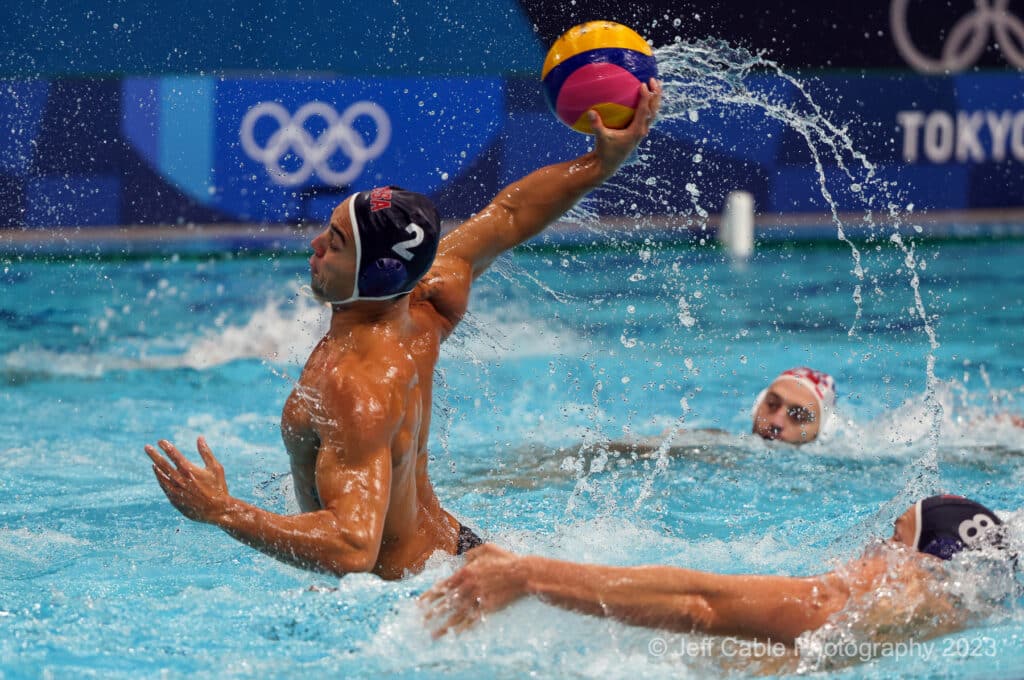
Preparing for sports photography shoots.
The world of sports is a whirlwind of unpredictable moments that require photographers to be ready to capture action at a moment’s notice. The unpredictability of sports demands a carefully crafted plan to manage the chaos and seize those pivotal moments. With his expert tips and approach, Cable offers plenty of insider tips to help you navigate the chaotic world of sports photography, where the opportunity to capture breathtaking moments is often fleeting.
- Know the sport: I’ve said it before, but can’t emphasize this enough. The more familiar you are with the sport you are photographing, the more you can anticipate what will happen at any time and create the best possible images.
- Study the athletes: With school or amateur teams, this can be as simple as paying close attention to human nature and noting the players who are most expressive. For professional athletes, preparing in advance is key. When I photograph for an Olympic team, I study each athlete ahead of time so I know what to expect going into the event.
- Photo positions: Before you take any photos, walk around the area to determine the locations for best backgrounds, lighting and peak of action.
- Prep your supplies: Have your batteries charged, your memory cards formatted, and computer and card readers ready to download. This is especially true when you are under tight deadlines.
- Have the right gear and settings:
- Determine the best lenses for that environment, based on your proximity and the sport you are shooting.
- Check your camera settings to make sure you are in the right modes (burst rate, focus, metering, etc)
- If you are using a large lens, bring a monopod to save your back, neck, and wrist muscles from strain.
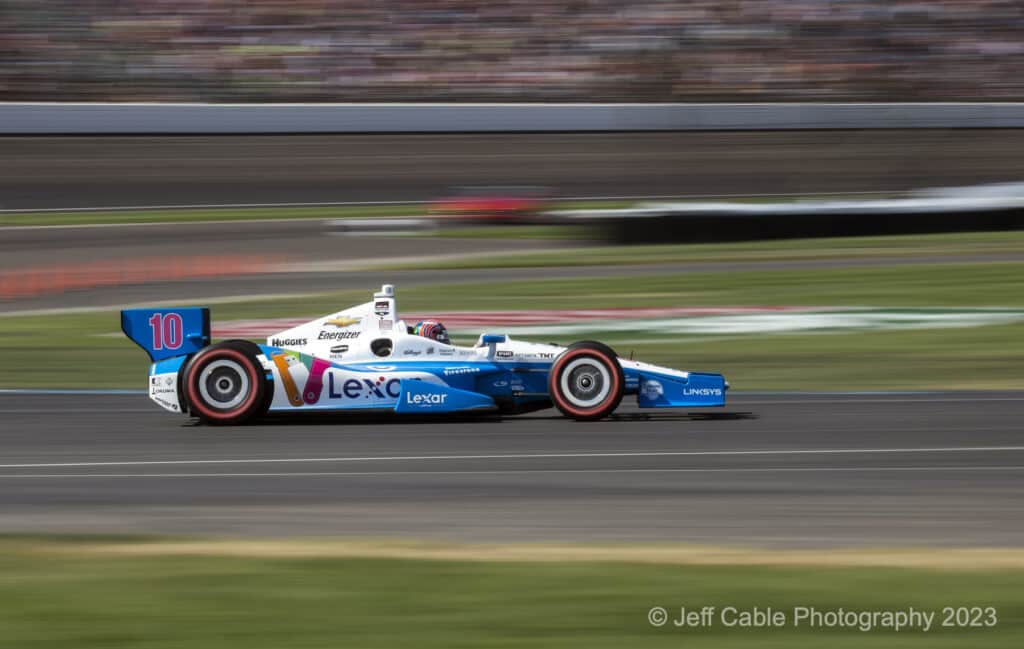
Post-processing techniques for sports photography.
In this section, we’ll explore expert tips for enhancing sports photographs in post-processing. Post-processing, when done skillfully, can bring your photos to life, enhance their impact and elevate them to another level. From refining exposure to optimizing colors and emphasizing the sense of motion, these techniques can transform your raw photos into vibrant and dynamic visual stories, preserving the emotion, drama, and energy of sporting moments.
- Adjust exposure and contrast: Adjusting exposure and contrast can help your subject stand out in the image and create a mood. Use tools like curves and levels to enhance the overall tone.
- Optimize colors: Sports events often feature vibrant team colors and uniforms. Use color correction and enhancement tools to make these colors pop.
- Emphasize motion: Techniques such as motion blur or selective sharpening can help you direct the viewer’s focus and convey the speed and motion inherent in sports.
- Crop for impact: A well-thought-out crop can significantly enhance the overall composition and eliminate distractions so you can emphasize your subject more.
- Selective editing: Don’t be afraid to make selective adjustments to specific areas of your image. For example, dodging and burning can help highlight or shade specific areas, adding depth and drama. AI tools can help speed up the process of fine adjustments, too.
Build an online portfolio website you love.
Put your sports photography in the spotlight.